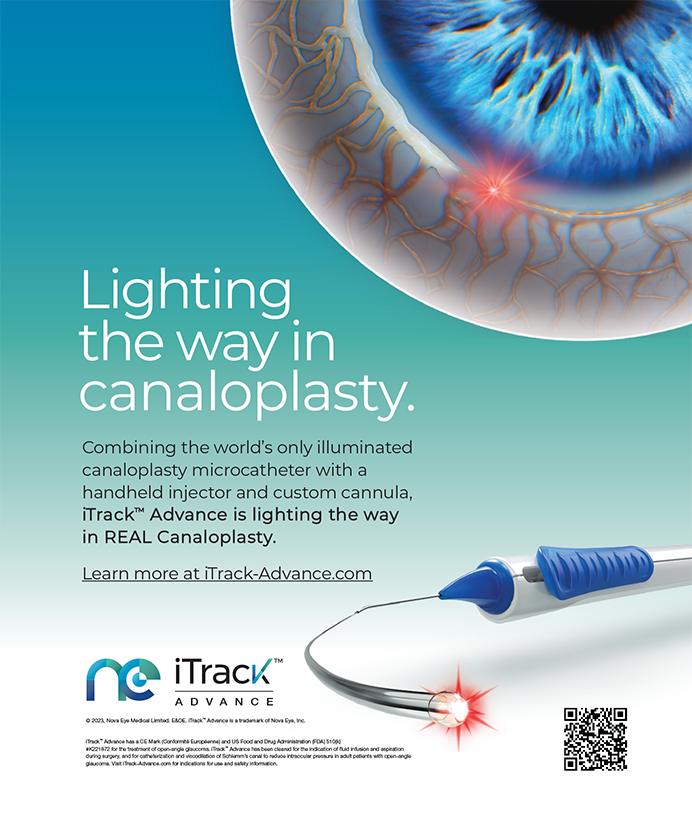
Allergic conjunctivitis is an exceedingly common condition, affecting between 50 and 85 million Americans, or 15% to 25% of the US population. Estimates are also rising globally. As a result, the disease’s effects, which include discomfort, morbidity, and productivity loss, are having an increasing impact worldwide.1
In my Long Island, New York, practice, I estimate that more than 50% of my patients experience ocular allergy symptoms. While I practice in an ocular surface disease and dry eye disease (DED) center of excellence, I suspect that the experiences of many of my colleagues are similar.
AT A GLANCE
• Allergic conjunctivitis is an exceedingly common condition, affecting between 50 and 85 million Americans, or 15% to 25% of the US population. Estimates are also rising globally.
• Most eye care professionals can easily detect the ocular itching and papillary changes associated with allergic
conjunctivitis, but the root causes are frequently not identified. Historically, when a patient presents with symptoms of ocular surface disease, the response has
been to prescribe artificial tears, an antibiotic-steroid combination, and/or an antihistamine, all of which may or may not be effective or even necessary.
• Two years ago, our practice began using the Doctor’s Allergy Formula test to identify allergies that may be
the underlying cause of ocular surface disease. The kit, which is administered using a plastic skin-prick applicator, requires no needles or shots. It employs a
panel that contains the 58 most common allergens endemic to the practitioner’s region; 39 different regionalized panels are available.
THE DIAGNOSTIC DILEMMA
Most eye care professionals can easily detect the ocular itching and papillary changes associated with allergic conjunctivitis, but the root causes are frequently not identified. Historically, when a patient presents with symptoms of ocular surface disease, the response has been to prescribe artificial tears, an antibiotic-steroid combination, and/or an antihistamine, all of which may or may not be effective or even necessary. What is more, because ocular allergy symptoms often overlap with those of other conditions such as DED and blepharitis, misdiagnosis is also a risk without a precise understanding of the etiology.2
Patients who do not get relief from their symptoms experience continued discomfort, and they can be at greater risk of bacterial or viral conjunctivitis. This risk comes as a result of rubbing their eyes because of the irritation, thus potentially increasing the exposure to microbes. Persistent ocular allergy symptoms also tend to make people squint, and women with ocular allergies often find it impossible to wear eye makeup. All of this may lead to frustration for the patient and eye care provider. Patients’ dissatisfaction with the care they receive can lead to challenges to the provider’s practice and reputation.
A SIMPLE SOLUTION
Two years ago, our practice began using the Doctor’s Allergy Formula test (Bausch + Lomb), an FDA-approved diagnostic test to identify allergies that may be the underlying cause of ocular surface disease. The kit, which is administered using a plastic skin-prick applicator, requires no needles or shots. It employs a panel that contains the 58 most common allergens endemic to the practitioner’s region; 39 different regionalized panels are available.
This rapid, objective test uses the skin’s surface to elicit an immunologic response from the body. The user gently presses a plastic applicator to superficially prick the patient’s forearm. This exposes the patient to the panel of antigens without needles, injections, or blood loss if the procedure is done properly. A trained technician can perform the test in a few minutes, and the results are then obtained in approximately 10 to 15 minutes.
INTEGRATING THE TEST
The test was easy to integrate into our busy practice. When a patient complains of ocular itching or discomfort during an examination, or if I identify other commonly associated findings such as papillary changes or a grayish-white stringy discharge, I ask if the patient’s eyes itch either seasonally or occasionally. I also ask the patient if this ocular itching is an annoyance. For those who reply that it is, I propose the test.
Once patients confirm their interest in having the test done, we schedule it on a different day, as patients must stop certain medications, including allergy treatments, for up to 5 days before testing. Those unable to do so because of the severity of their symptoms can opt to schedule the test outside of the allergy seasons, spring and fall. Another option is for patients to stop using an antihistamine and instead use a steroid drop such as Alrex (loteprednol etabonate ophthalmic suspension 0.2%; Bausch + Lomb) or a leukotriene receptor antagonist such as Singulair (montelukast sodium; Merck), which may alleviate their allergy symptoms but will not interfere with the allergy testing.3
The test is administered by a trained technician assigned specifically to this task. After the results are generated, I spend about 90 seconds verbally explaining the outcomes to the patient, and I provide a printout of the positive allergens from the Doctor’s Allergy Formula Allergen Resource Guide. Once patients are armed with this information, my recommendations for relief might be as simple as avoiding certain allergens to which they have been regularly exposed.
I end the conversation with patients by explaining that, although we identified certain allergens today, it is possible they are allergic to other antigens for which they were not tested, as there are thousands of potential allergens in the air. I also recommend that, because allergies can change over time, they might want to consider repeating the test in the future.
CONCLUSION
Testing patients to aid in the identification of the potential root causes of their ocular allergy symptoms has helped us provide better care and enhanced our practice. We receive positive feedback from patients, and our staff takes pride in offering a cutting-edge technology that can assist in our efforts to address our patients’ needs. Additionally, the Doctor’s Allergy Formula test has been a welcome source of revenue for our practice, as we receive reimbursement from many major medical insurance providers.
This diagnostic system has been a welcome addition to our established DED and ocular surface disease center of excellence. For those just beginning such a practice, this system may be of benefit right from the start.
1. Gomes PJ. Trends in prevalence and treatment of ocular allergy. Curr Opin Allergy Clin Immunol. 2014;14(5):451-456.
2. Hom MM, Nguyen AL, Bielory L. Allergic conjunctivitis and dry eye syndrome. Ann Allergy Asthma Immunol. 2012;108(3):163-166.
3. Ciebiada MG, Barylski M, Ciebiada M. Wheal and flare reactions in skin prick tests of patients treated with montelukast alone or in combination with antihistamines. Inflamm Res. 2014;63(3):191-195.
Marguerite McDonald, MD
• cornea, cataract, and refractive surgery at Ophthalmic Consultants of Long Island, New York
• (516) 593-7709; margueritemcdmd@aol.com
• financial disclosure: consultant to Bausch + Lomb


